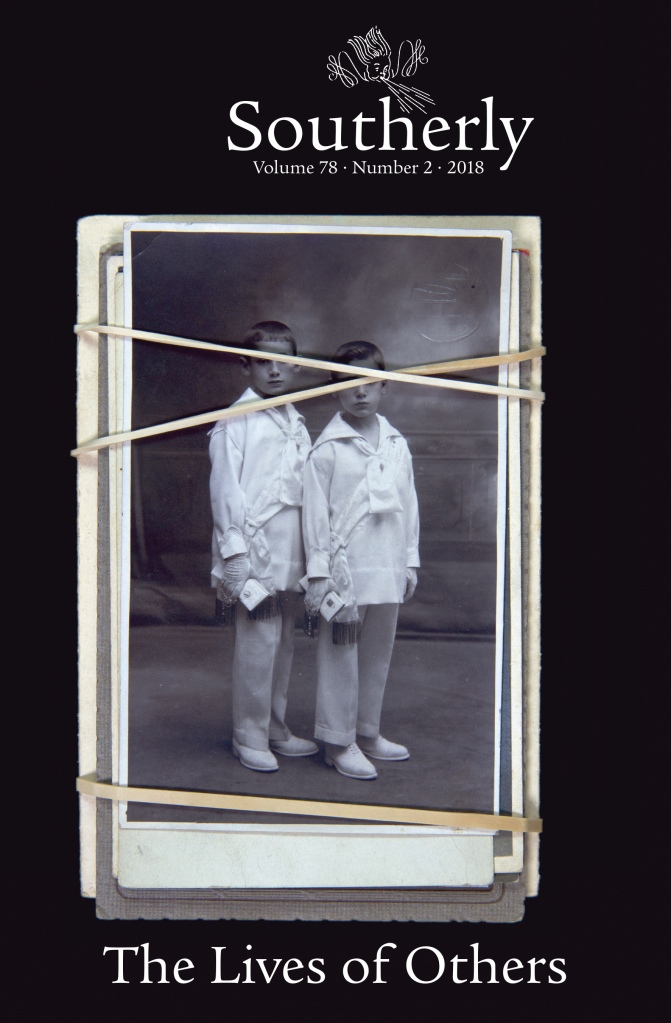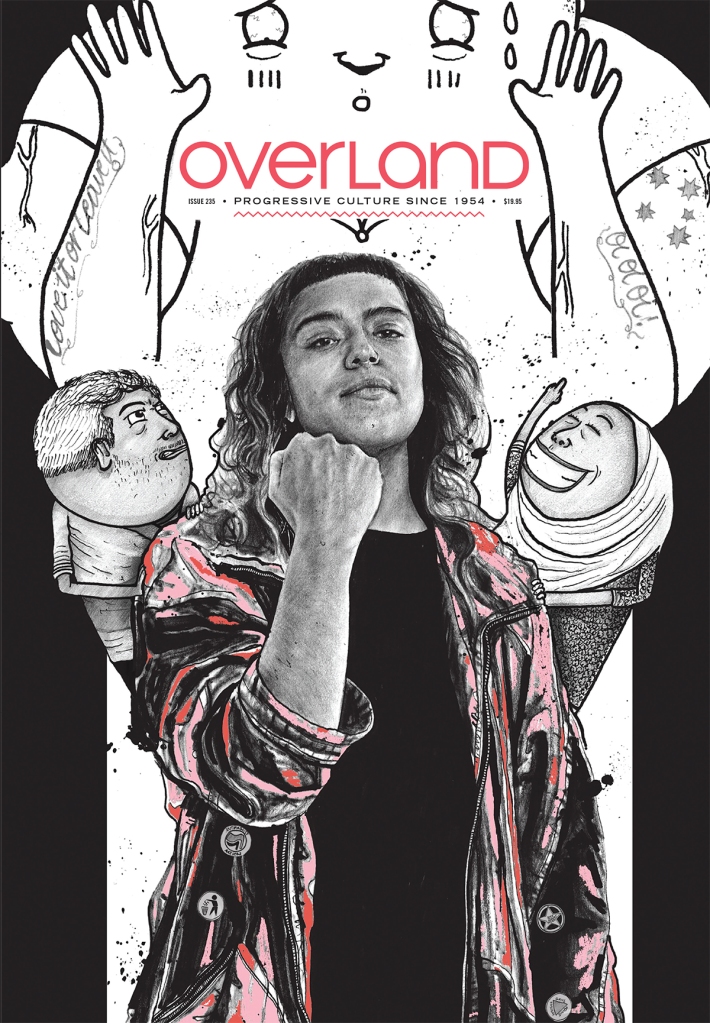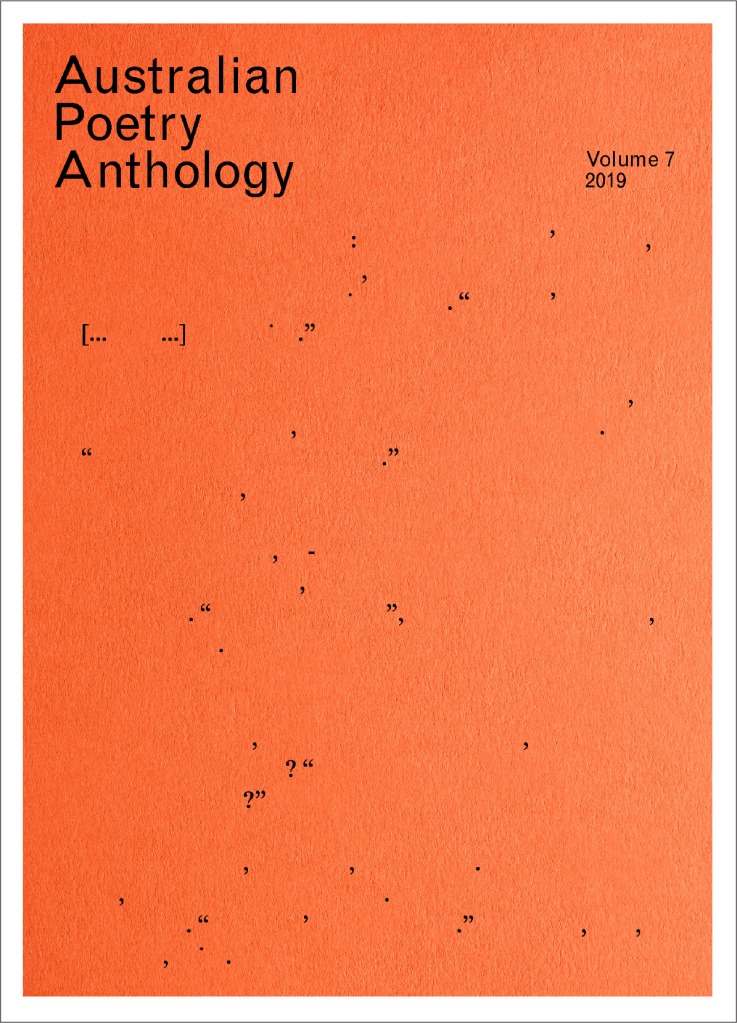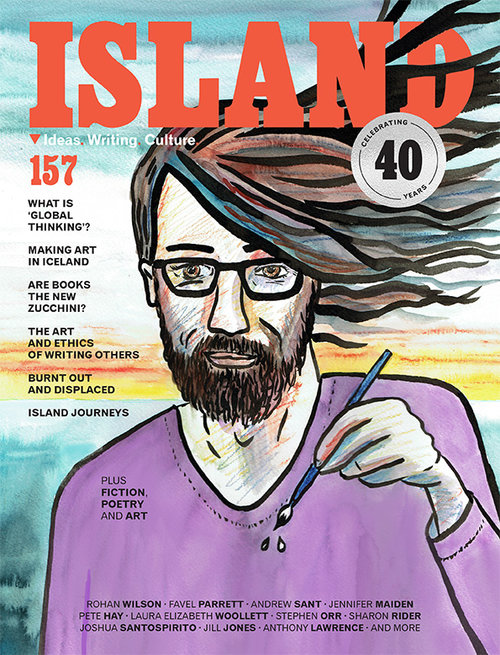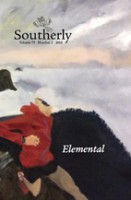I guess I’ll never be up to date with the journals I subscribe to. This is my fifth catch-up blog post, and I’m still reading things about a year after publication. Here they are: one from a university, one from the left, one from an organisation of poets and one from an island.
Elizabeth McMahon (editor) and George Kouvaros (guest editor), Southerly Vol 78 No 2 2018: The Lives of Others (2019)
This issue of Southerly, the back cover tells us, ‘is concerned with the debts and obligations that accompany the passing of the generations’, a way of saying that it has a theme of family – personal reminiscence, family history, lines of cultural genealogy.
Here are some of my highlights.
In ‘The Other Life’, guest editor George Kouvaros explores his childhood feelings about a photo of a cousin about his own age who stayed in Greece when Kouvaros’ family moved to Australia. He builds fascinatingly around the notion, borrowed from Marsha Gressen, that migrants are often haunted by a sense of a double life: the one they are living and the one they would have had if they stayed.
Brendan Ryan’s memoir ‘John Forbes in Carlton’ paints a vivid picture of Forbes (dobbed ‘God on a bicycle’ by a Melbourne wit ) as mentor, and is a sweet account of how the creative baton was passed down the generations. It would have gone well as a chapter in Homage to John Forbes, edited by Ken Bolton in 2002. I’m a fan of both Forbes and Ryan (blog posts, here, here, here and here), but I don’t think you’d need to be to find joy in the essay.
Maria Griffin’s ‘Benjamin’ is a poignant, elegiac meditation on death and extinction. Her immediate subjects are her younger brother, who died aged 32, and the Thylacine / Tasmanian tiger. With a light but dagger-sharp touch she allows the subject to broaden to include the climate emergency. (One small cavil: she imagines Australia during the last ice age as covered with sheets of ice, whereas – correct me if I’m wrong – the archaeological evidence suggests that, though bitterly cold, it was covered in dust.)
Meera Atkinson’s fiction ‘Necropolis Drive’ makes brilliant and powerful use of archival material – her protagonist is researching the history of women incarcerated as insane in colonial times, and correspondence from the NSW Government State Archives and Letters leap from her pages to grab the reader by the throat.
Sharryn Ryan’s memoir ‘The Miracle’ is as powerful a story of growing up with an emotionally unstable mother as you’re likely to read anywhere. Its story of wildness is told with extraordinary restraint, and all the more effective and affecting for it.
Katherine Maher’s ‘One of Your Family’ reads as a fragment from a much broader piece of research. It approaches the issue of the Stolen Generations with a narrow focus, discussing a four-minute video of one Thupi Warra man’s response to Kevin Rudd’s 2008 apology. Maher tells us that this is one of 25 videos of this nature held in the State Library of Queensland. ‘I’m not sure,’ her essay concludes, ‘how to truly hear the history he tells.’ Essays like hers help the rest of us clean out our ears.
Three reviews inspired me to do some rereading, and re-savouring: Naomi Riddle on Fiona Wright’s Domestic Interior (my blog post here; I think Wright is funnier than Naomi Riddle seems to); Peter Kirkpatrick on Martin Langford’s Neat Snakes (my post here) and Brigitta Olubas on Sarah Day’s Towards Light (my post here).
Jacinda Woodhead (editor), Overland 235 (Winter 2019)
This is the eighteenth and last issue of Overland edited by Jacinda Woodhead. The woman on the cover isn’t her, but a ‘friend and fellow anti-fascist organiser’ of the guest artist Tia Kass. Still, that woman’s confident fist isn’t a bad emblem for Woodhead’s – and Overland‘s – work.
I don’t usually read editorials, let alone quote from them, but as this was Jacinda Woodhead’s farewell, I made an exception (link here). She asks, ‘So what is a left-wing literary magazine today?’, and replies in part:
Now more than ever, we need projects like Overland: we may not always agree with the positions and experiments published in its pages, but it’s critical to build spaces where collective alternatives, where collective futures can be articulated.
I subscribe to Overland to support the building of such a space. Then I read it because it generally includes news and thinking that I don’t easily get elsewhere. Here’s how the journal starts (with links to the articles online):
In ‘La mina no se cierra’, Caitlin Doyle-Markwick walks one of the variants of the Camino de Santiago in Spain (definitely not the walk with guides advertised in today’s Sydney Morning Herald that costs $25 thousand a head). The essay’s title – Spanish for ‘The mine will not close’ – is from graffiti she saw in Asturias referring to a major struggle early last decade. The graffiti, and the history that gave rise to it, is a springboard to rich and complex reflections on the current move against coal mines in Australia and the need for a just transition to renewables.
In ‘On grief’, regular columnist Tony Birch, as always, avoids grand rhetorical statements and takes us briefly into his own recent experience of bereavement.
‘Restorying care’, a PEN essay by Ellen van Neerven writes about the struggle of many First Nations people to ‘feel heard or tell our story’ in the health system. A brief quote:
Data is used to build, and claim, story. Recently, the term ‘data sovereignty’ has been used to describe mob’s sovereign right to their own data: all data should be subject to the laws and governance structures within the Indigenous Nation where it is collected. This data should be accessible to the community. Unfortunately we are a long way from that.
Then there are nine pages of poetry, including ‘Report on Norman – after Vigan’ by Norman Erikson Pasaribu (the title is mysterious to me, but the poem itself is terrific), ‘Walis tingting’ by Ivy Alvarez (which finds poetry in a Philippine palm-leaf broom), and ‘The hymen diaries’ by Eileen Chong (a set of four short poems that stands up on its own, but becomes much richer when seen alongside the stunning works of art it references – by Katie Griesar, Annette Messager, Paul McCarthy and Juana Francés).
But I won’t go on listing the whole contents. Here are some of the rest:
- ‘The gunboat nation in a lifeboat world’, by Scott Robinson, subtitled ‘On the militarisation of climate change’, wins my prize for the most telling metaphor in a title
- Alison Croggon ruminates ‘On art‘ in times of crisis like ours
- Giacomo Lichtner celebrates Primo Levi’s hundredth birth year by singling out ten fragments of If This Is A Man, in ‘One hundred years of Primo Levi’
- There are five short stories, of which the one that stands out most for me is Jem Tyley-Miller’s ‘The island’, which imagines a surreal solution to the refugee crisis involving those vast collections of garbage in the ocean
- ‘The most natural thing’ by Natalie Kon-yu is a peer-reviewed personal essay that introduced me to the parthood model of pregnancy, as opposed to the container model
- Enza Gandolfo’s ‘Making & shaping’. which would have fitted nicely into the Southerly‘s theme, is a moving meditation on her mother’s crocheting artistry and her own changing understanding of it
- and regular columnist Giovanni Tiso strikes an intimate note in ‘On not moving to Australia‘, linking his decision to stay in New Zealand because he has two children who live with autism with Australia harsh rules for New Zealanders who come here, and it’s even harsher treatment of some refugees.
Yvette Holt and Magan Magan (editors), Australian Poetry Anthology Volume 7 (2019)
This is Australian Poetry Inc’s seventh annual anthology of members’ poetry. In the words of one of its editors, it hosts ‘a focus on poets heralding from the Northern Territory, from the Top End, Western Desert, Utopia, Barkly, and of course Central Australia’. Those poets aren’t corralled into a special section, but take their place alongside others, including some whose books have won prestigious prizes. There are plenty of First Nations voices, including some writing from in prison and some who are household names. A fair number of the poems come from the Spoken Word milieu. It’s a beautifully democratic, diverse collection.
Having said that, I’m reluctant to single any individuals out. I’ll just quote some lines from a handful of poems that deal with fire, drought and flood, perhaps surprisingly many given that this anthology was published well before the current bushfire season,.
Kaye Aldenhoven’s ‘Cleaning the Country – April in Kakadu’ is about fire as a benign tool for land management:
Cool Dry season wind shifts the wind chimes sending clear bell sounds out over fire-cleared land. On the tongue the metallic smell of yesterday's smoke. In the burnt area an invisible wind spirit raises puffs of dust as she sweeps ashes of grass.
Kelly Lee Hickey, ‘Notes from a Heatwave’, captures the lassitude of hot dry weather in five short stanzas:
All the nests are abandoned. The pea chick dies in my hands.
Peter Mitchell, ‘Forgotten Sparks’, recalls a 1968 bushfire:
We were surrounded by tongues, the speech of flames: shouts, clamour and argument. Their babble charged our homes.
Fiona Dorrell’s heartbreaking image from a drought, ‘Forty Horses at Santa Teresa’:
One horse lies down crosses and tucks its legs up close to its body. Others stretch heads back in dirt almost smelling of algae and sieve hot air through yellow spade teeth.
Not quite on topic is Michele Seminara’s ‘Family Tree’, which laments the loss of a tree that has been part of her life since childhood:
They amputate the limbs to make it easier to fell; I know that feeling.
Vern Field (managing editor), Island 157 (2019)
I don’t have a subscription to Island, whose web site describes it as ‘celebrating ideas, writing and culture from our base in Hobart, Tasmania’ since 1979. I bought this issue because it features a poem by Jennifer Maiden (who isn’t from Tasmania).
Compared with the other journals in this post, Island is a lavish affair, with full page colour illustrations and advertisements for theatre events.
It’s a good read, with a preponderance of items that are excerpts from longer works (from Favel Parrett’s There was Still Love, which I intend to read; from a graphic novel, Islands and Ships by Joshua Santospirito, author of The Long Weekend in Alice Springs (my blog post here); from a lecture by Sharon Rider, which introduced me to some basics of Kant’s philosophy), and author’s notes on works in progress (Laura Elizabeth Woollett doing research on Norfolk Island; two separate accounts of artist and writer visits to Iceland; Rohan Wilson musing on the ethics of setting a climate-change (‘cli-fi’) novel in the Maldives).
‘Burnt Out’ by Liz Evans is a tale of not losing her home to bushfire in the 2018–2019 summer. Though the experience she describes is harrowing, it feels oddly tranquil when read in the aftermath of the recent mammoth fires, as it places the fire events in the context of the writer’s London background and is illustrated by gorgeously dramatic photographs.
There are short stories, of which Anne Casey’s comedy of teenage errors set in a cake shop, ‘What I’d Do If I Was in Charge’, stands out.
Jennifer Maiden’s ‘Pollock, Whiteley and the Critic: Seven Layers‘ isn’t the only poem, but it’s the one that spoke most strongly to me. (Perhaps I should have listed it as one of the excerpts above, as it’s included in Maiden’s The Espionage Act recently published by Quemar Press.) It’s one of her imaginary dialogues: the two painters of the title and an art critic stand in front of Jackson Pollock’s Blue Poles, and their conversation ranges over an early self portrait by Brett Whiteley (I looked it up, it’s real, there’s an article on it here), the CIA’s program to back abstract expressionism as a counter to social realism, the effect this had on Pollock’s art and life … As is generally the case with Jennifer Maiden’s dialogues, it works as a strangely surreal encounter among recognisable characters, with a strong undertow of not-quite-pindownable meaning.
Thanks for reading this far. It’s not the last of my journal catch-up posts …

